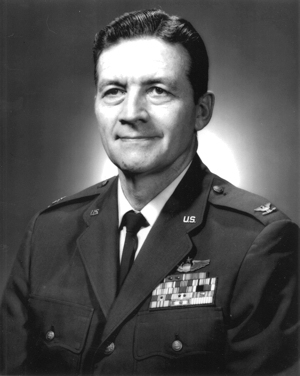It strikes me that the significance of Mitchell, Arnold, Schreiver, and Boyd and their travails was not that they were always right. What strikes me is that they had the vision and insight to see that the world and technology had changed. They understood the implications of that change, and they pressed ahead in the face of incredibly fierce institutional resistance.
One of the reasons they were successful at championing their ideas is that they were always willing to speak truth to power…. -Secretary Gates
*****
This is great and totally worthy of a ‘building snowmobiles’ post. Secretary of Defense Gates pays homage to Col. John Boyd in a big way with this lecture, and I was certainly motivated by the words. It is a lecture that completely supports the concept of ‘to be, or to do’. How incredibly refreshing it is to hear such words from someone at that top.
I will shut up now, and let the reader check out this ‘truck load of awesome’. –Matt
——————————————————————

Col. John Boyd.
United States Air Force Academy Lecture
Remarks as Delivered by Secretary of Defense Robert M. Gates,
Colorado Springs, CO
Friday, April 02, 2010
*****
Thank you for that introduction.
It’s a pleasure to be back at the Air Force Academy for my first visit since 2007, when I spoke at commencement. And I’m particularly happy to be in Colorado Springs, but then I am happy to be anywhere other than Washington, D.C.
I should begin by congratulating the Class of 2013 for making it through “Recognition” and earning your props and wings. It’s a great achievement and one you should be proud of. I hope you’ve had a chance to get some well-earned freedom.
I certainly did not go through anything nearly as rigorous when I was commissioned as an Air Force officer 43 years ago. I have to admit now, though, four decades plus removed from Officer Training School at Lackland Air Force Base, Texas, I’m a little surprised that they even let me out.
Now, in a normal speech, I would thank you all for coming, but I know full well that this event is not exactly optional – so, my apologies — and I’ll be content with thanking you for just staying awake after lunch, or at least trying to, with the schedule that you all have here.